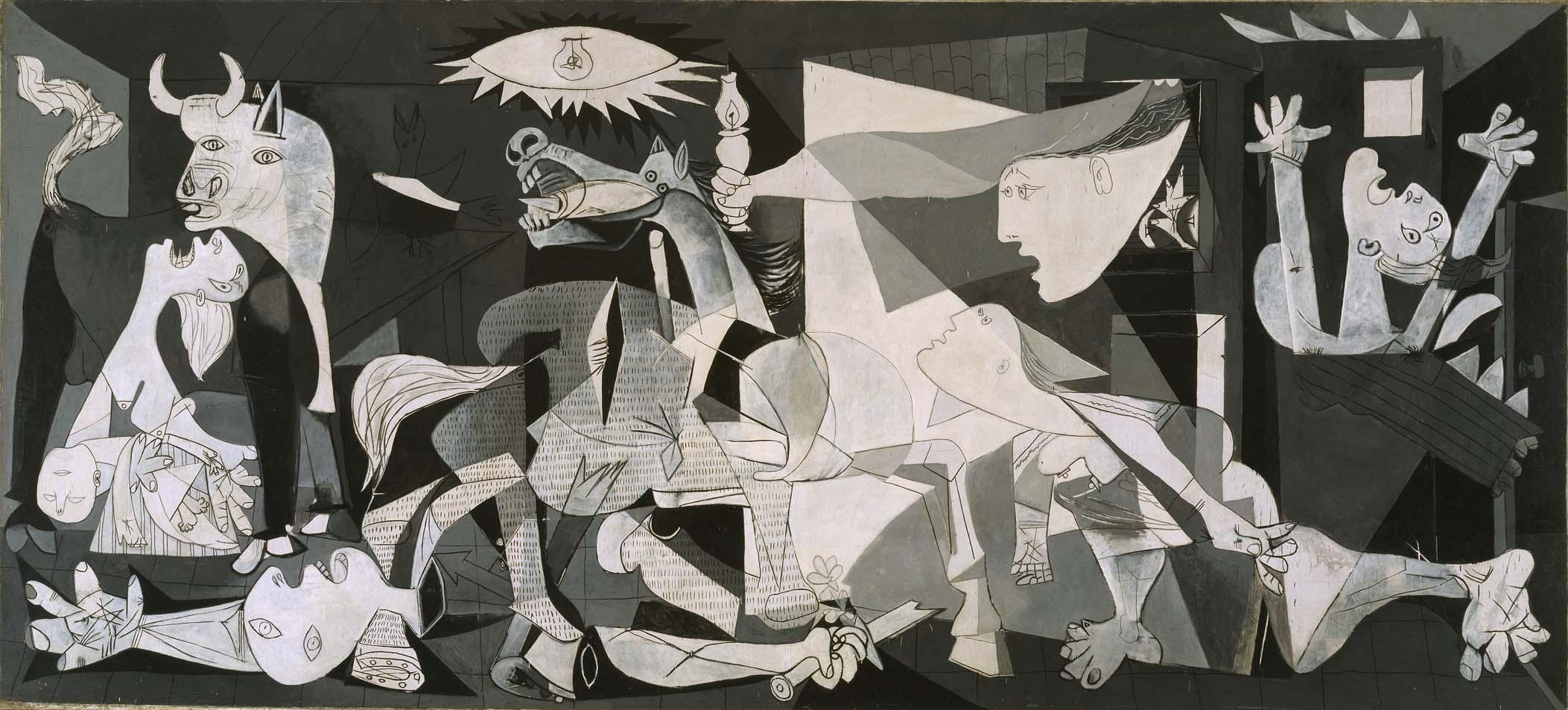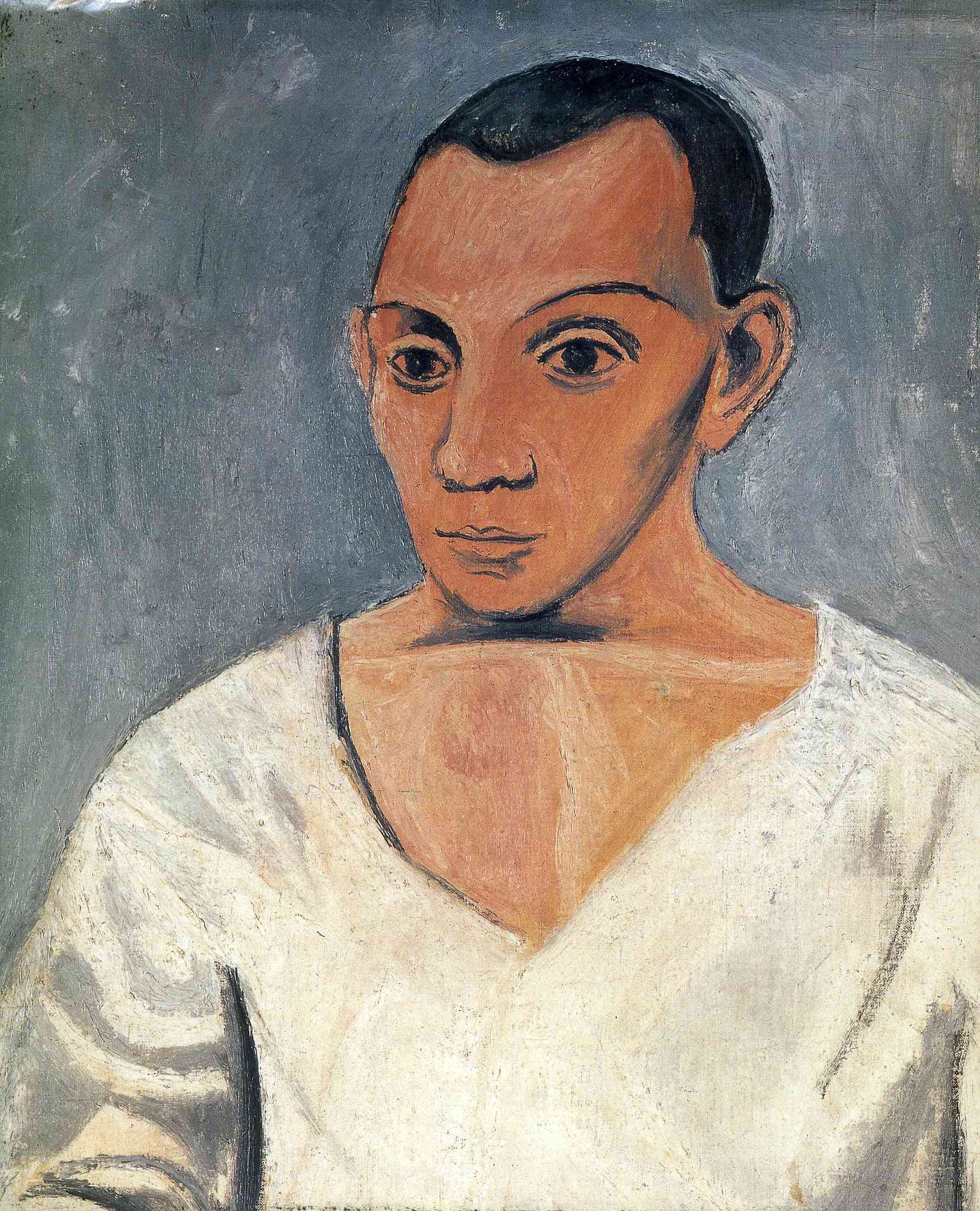



Guernica
oil on canvas • 349 cm × 776 cm
Probably Picasso's most famous work, Guernica is certainly the his most powerful political statement, painted as an immediate reaction to the Nazi's devastating casual bombing practice on the Basque town of Guernica during Spanish Civil War.
Guernica shows the tragedies of war and the suffering it inflicts upon individuals, particularly innocent civilians. This work has gained a monumental status, becoming a perpetual reminder of the tragedies of war, an anti-war symbol, and an embodiment of peace. On completion Guernica was displayed around the world in a brief tour, becoming famous and widely acclaimed. This tour helped bring the Spanish Civil War to the world's attention.
The preoccupying theme of Guernica is of course death; reinforcing this, in the centre of the painting is a hidden skull which dominates the viewer's subliminal impressions.
The skull is shown sideways and has been ingeniously overlaid onto the body of the horse, which is also a death symbol. The skull's mechanical appearance seems appropriate to the modern weaponry used in the 1937 bombing. Picasso often hid one or more related symbols within a particular image as seen here.
Below the dying horse in the centre of the painting is a concealed bull's head contained in the outline of the horse's buckled front leg. Its location infers that that it is plunging its horns into the horse's belly from below... the goring of the horse in the bullfight was a favourite subject for Picasso and has strong sexual overtones.
 Pablo Picasso
Pablo Picasso